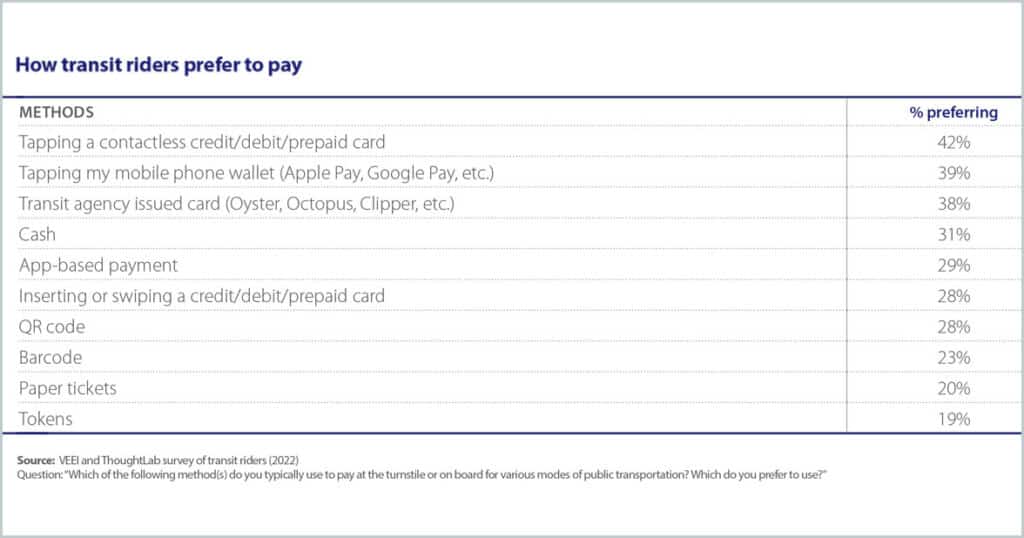
More than four in ten transit passengers worldwide say that tapping their own debit or credit card to make open loop contactless fare payments is their preferred fare payment option (42%), followed by tapping a card stored in their mobile wallet (39%), using a closed loop transit card (38%), cash (31%) and app-based payment (29%), according to a Visa survey.
Participants in the survey identified the key benefits of open loop contactless fare payments as being a faster and more efficient payment experience (57%), avoiding the need to carry cash (49%), and improving safety and hygiene (46%).
The survey also found, however, that transit agencies that have already implemented an open loop contactless fare payment system identified data security and privacy risks (47%), infrastructure installation costs (45%), promoting open loop benefits to existing passengers (45%), theft and system misuse (41%) and software performance issues (41%) as being among the top challenges they faced during implementation.
At the same time, the researchers report that as those agencies “gained experience and comfort with open-loop systems, their concerns about these risks declined significantly.
“While 55% of agencies who had adopted open-loop payments less than two years ago cited data security and privacy as a challenge, only 36% of agencies with two or more years of experience expressed the same concerns.”
Of the transit agencies that have yet to introduce open loop contactless fare payments, the survey found that 83% plan to adopt them and 70% of these aim to do so “in the next two years”.
Contactless benefits
“The introduction of contactless, open-loop payments has been shown to have significant impacts on how people choose to move through urban environments,” the researchers say.
“The benefits to transit agencies that adopt contactless payments include improved access to data for system planning, more responsive customer service and improved rider experience, and a growing year-over-year conversion of cash-based fare payments.
“By removing cash from the system and decreasing the resource impacts of cash handling, agencies become better able to meet the needs of riders.
“Riders also benefit from contactless payments. Contactless solutions for urban mobility provide easy access to transit and an improved experience for regular riders, occasional riders and visitors. People with no or little access to banking services can take advantage of contactless payments by using prepaid cards.”
The ‘Reimagining ridership: Open loop payments and the future of urban mobility’ survey was conducted by the Visa Economic Empowerment Institute and global research firm ThoughtLab with 75 transit agencies worldwide as well as 3,000 transit users in six cities “that were in varying stages of implementing open-loop payments in 2020” — Bangkok, Brussels, Bucharest, New York, Rio de Janeiro and Singapore.
Next: Visit the NFCW Expo to find new suppliers and solutions